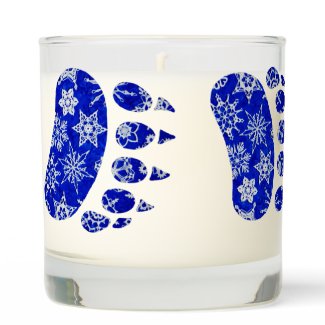During lunch with a friend I'd not seen in quite a while, she shared a story that nearly caused me to lose my appetite.
She'd bought a candy bar at a local convenience store. She placed it in a plastic grocery bag she already had. She finished up a few errands and went home. A couple of hours later, she opened the plastic bag to start in on the candy bar, but the bag and the bar were covered with mealy bugs.
That experience would be enough to keep me away from candy bars for life!
My friend did not know if the bugs originated in the candy bar wrapping or the grocery bag, which she'd had for a while and used many times with no sign of pests whatsoever. The candy bar did have damaged wrapping, so it is entirely possible the bugs came from inside the packaging.
My friend was most upset because she did not save the receipt from the convenience store, so she couldn't get a refund.
I was dismayed because other candy bars in that store may be equally as infected! But also, this tale brought back horrific memories of last year's garden terrorists.
I still don't know for sure where my mealy bugs originated. I've now disposed of all plants with infestations, as well as remaining soil and all infected plant containers. Even the beloved hoya plant The Lizard inherited from his father had to be discarded in November when the infestation returned a third time, following diligent effort to control and exterminate the prehistoric-looking monsters.
My friend's tale reminded me I had not inspected my indoor garden since before Christmas. Diligence slipped.
I conducted a fairly quick inspection of the plants in the area where the hoya had once resided, and remaning plants seemed okay. I applied another helping of neem oil just to make sure.
Two days later, The Lizard and I were leaning over the kitchen sink while eating our whole grain and nut toast sprinkled with cinnamon, ginger and clove (so as not to spill spices on the floor) when I noticed a live and crawling mealy bug on a container with one of my surviving clove trees.
I had never had mealy bugs in this area of the house − dead counter space behind my corner-angled sink is home to my frequently used fresh sage, chives, cilantro, basil and oregano, as well as a small lavender plant. The medium-sized clove tree, about five inches tall, had been placed there last summer because it wasn't growing in full sunlight, where three more surviors were beginning to tower, one now 18 inches tall! I wanted to see how indirect light would affect the little clove tree.
The little clove tree didn't grow in the last six months, but it didn't die, either. Three other little trees have died during that time, all in direct sunlight, the very same sunlight apparently igniting a growth spurt with the tallest three trees.
The little clove tree had been close to the tomato plant where I first diagnosed the mealy bug infestation. I had carefully checked EVERYTHING when I first learned what was causing the white stuff on the leaves and stems of the tomato plant. Initially, the bugs will hide beneath the leaves of the plant. But when they reach that point, the container is already infested.
I had learned the bugs take up residence underneath the lip of the container, on the bottom of the container and in the water reservoir at the bottom of the pot. They lay eggs everywhere they hide. I had learned infestations are extremely difficult to erradicate, and often the best method of control is to pitch everything and start over from scratch.
It took me several months to reach the point of being able to throw out beloved plants with repeated infestations. I kept trying to save them. Like little lost children. I couldn't bear to part with them.
Until I realized the bugs were still spreading.
So I started pitching.
The little clove tree appeared to be completely safe. No bugs had taken up residence inside the pot. I had moved the tree to the kitchen because I thought it was clean. I had no clue it harbored unhatched eggs.
I inspected my kitchen herb garden and wasted no time discarding the entire collection. They, too, were infested. The back sides of the perfectly fine spices I used at Thanksgiving were now covered with mealy bugs!
The monsters were back.
I was nearly late for work that day because I refused to leave my house until I checked every single pot in the living room. That's no small task. Some visitors think our house is a greenhouse because of all the plants.
Out of 27 pots nearest the living room window, 13 had mealy bugs beneath the pot lips. Two were heavy infestations, but only on the lips. Two more pots had single bugs on the pot bottoms.
EVERYTHING in the living room was treated once again before I left for work.
And then my research process began all over again.
What was I doing wrong? What could I do to keep this from happening again? How could I stop the spread for once and for all?
1. I must be diligent once again. Unfailing. I must treat once or twice a week for at least three months. Just in time for gardening season again.
2. Mealy bugs are common in greenhouses, which I guess accounts for why they seem to do so well inside the house. They like year-round warmth, although they do overwinter. One hint was to place plants that can handle a little bit of cool next to the window, and the bugs will migrate to the leaves furthest from the window. Then you just wipe them off. (And pray there are no eggs.)
3. No more mercy. Well, except for the clove trees. If I find another infestation, out the plant goes. Period. I have too many plants to risk spreading throughout the house.
4. As much as I hate Raid and commercial pesticides, the organic stuff isn't doing the job. Neem oil apparently renders mealy bugs unable to reproduce if they come in direct contact, but it has no effect on unexposed bugs.
5. Ants protect mealy bugs because the honeydew sap mealy bugs produce is like caviar to the ants. Ant infestations often follow mealy bug infestations.
6. Female mealy bugs have a protective waxy covering to hold in their moisture but also to fight off undesirable moisture. Such as natural and organic insecticides.
7. Rubbing alcohol and cotton swab are still the most effective treatment, but this must be done every few days for three months straight. At least. Six months would be better.
8. Each female lays 100-300 eggs. The life cycle of one female is roughly ten days. That's how they spread and keep spreading when you think they are gone.
9. The male's sole purpose in life is to fertilize the females. That's it. They don't damage the plants at all. They just enable the females to do their dirty deeds.
10. An infestation unchecked eventually will kill the plant because the females extract the juices from the plant. The plant starves.
There are days when I wonder why I even consider investing so much time into gardening when it is fraught with such time-consuming responsibility.
And then I see the first pasqueflowers, hyacinths and tulips of spring. Or watch the bees and butterflies drinking from lilacs, poppies and dahlias in summer. Or taste the serrano or habanero of autumn. Or photograph Christmas cacti all winter long.
Oh, yeah, THAT's why I'm willing to commit to this battle.
For life.





































Blah, that has got to be a pain and awful in every way. Those suckers, bugs of any kind really, are hard as hell to get rid of.
ReplyDeleteDid you ever try Diatomaceous Earth, I've read how some said it worked and as another alternative to raid and such.
I had not heard of it until now; looked it up and found... get this, it occurs naturally in Colorado. !!!
DeleteI've been using neem and a power made from chrystanthemums for the past couple of months now, and only a rare mealy bug every other week or so, so I may have gotten ahead of the game. Finally! (I wrote this post the week after Christmas.)
This gives me the willies. SO sorry to hear about your herbs and your clove tree.
ReplyDeleteI have fought some pitched battles over the years with spider mites, managing to save my oldest rosemary bush, but have lost many other plants to the little buggers.
Good luck!
Thanks, Sue. The clove tree is okay, so far. The hoya had to take a walk. I've planted new spices now (and some are coming up!!!), and we found a baby hoya plant we think will match the one we had to so sadly part with.
DeleteI've already had spider mites and aphids this year, and it's not even gardening season yet. Can't be a good sign.
Yea, I might have to start avoiding candy myself, after reading this story. Ugh! Thanks for the info on bug infestation. I learned a few things here today and really appreciate it.
ReplyDeleteMJ, I would not be able to look at any food product bearing mealy bugs again!
DeleteAnd hopefully the education will help me fight back. The mealies have certainly given me a heck of a battle in the last eight months!
ouch, what a disaster. I hope it is now hsitory. I had problem once in teh kitchen but not like that. But I had to throw away a lot of food. :(
ReplyDeleteRe the cat. No, it is not mine. I met it on my walk yesterday. :)
Monica, that cat probably would have found a new home with me. And not because it followed me home!
DeleteThe mealies have indeed been a disaster, but I think I'm finally beginning to get ahead of the game. I think I'm making strong progress. Fine only about one a week now...